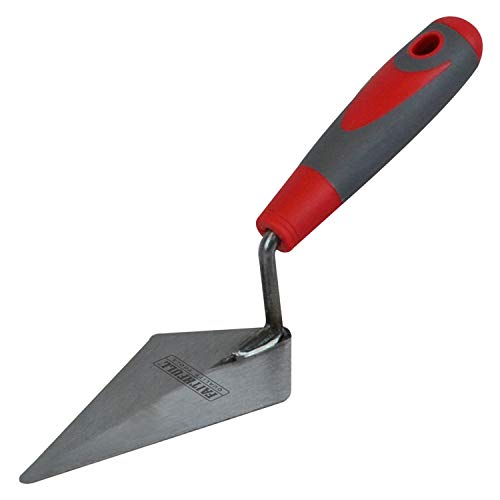Yes, a trowel can be used for concrete work
Concrete is a versatile material that is commonly used in construction projects. It is known for its strength and durability, making it an ideal choice for various applications such as foundations, driveways, and sidewalks. When it comes to working with concrete, there are various tools and equipment that are used to ensure the proper placement and finishing of the material. One such tool is a trowel, which can be effectively used for concrete work.
What is a trowel?
A trowel is a handheld tool that is typically used for spreading and smoothing out materials such as concrete, mortar, and plaster. It consists of a flat, rectangular or triangular-shaped metal blade that is attached to a handle. The blade of the trowel is typically made of stainless steel or carbon steel, which allows for easy and efficient material placement and finishing. Trowels come in various sizes, with larger ones used for spreading and smoothing large areas of concrete, while smaller ones are used for detailed work or in tight spaces.
Using a trowel for concrete work
Although a trowel is commonly associated with masonry work, it can also be used for concrete work. A trowel can be used to spread and level wet concrete during the initial placement phase. The flat blade of the trowel can be easily maneuvered to ensure that the concrete is evenly distributed and levelled across the areas being worked on. This is especially useful when working on small areas or when access is limited.
Additionally, a trowel can also be used for finishing concrete surfaces. After the initial placement and leveling of the concrete, a trowel can be used to smooth out and remove any imperfections on the surface. This is done by pressing the flat blade of the trowel against the surface of the concrete and moving it in a back and forth motion. The trowel helps to create a smooth and uniform surface, which is important for both aesthetic and functional purposes.
Tips for using a trowel for concrete work
When using a trowel for concrete work, there are a few tips that can help ensure the best results:
- Select the right size trowel for the job. Smaller trowels are better suited for detailed work, while larger trowels are more efficient for spreading and leveling large areas.
- Keep the trowel clean and free of excess concrete buildup. This will help prevent any unwanted marks or texture on the surface of the concrete.
- Maintain a consistent pressure when using the trowel. Too much pressure can cause the trowel to dig into the concrete, while too little pressure can result in an uneven surface.
- Use long, smooth strokes when finishing the concrete surface. This will help create a uniform and professional-looking finish.
- Consider using a trowel with a rounded edge for a smoother finish. These trowels are designed to prevent drag marks and create a seamless surface.
In conclusion
A trowel can be a useful tool for concrete work, both for spreading and leveling wet concrete during the initial placement phase, as well as for finishing the surface to create a smooth and uniform finish. By following some basic tips, such as selecting the right size trowel and maintaining a consistent pressure, you can achieve professional results with the use of a trowel for concrete work.






